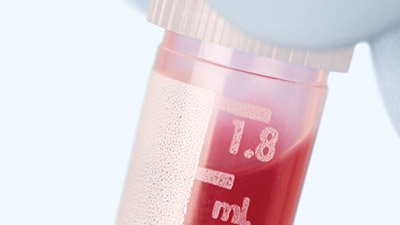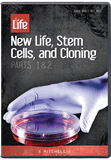Colon Grown with Adult Stem Cells
A recent ScienceDaily article highlighted groundbreaking research from the Cincinnati Children’s Hospital.1 Cincinnati Children’s, located just north of the Creation Museum, is ranked number three on the Best Children’s Hospitals Honor Roll.
Children’s Hospital researchers grew human colon organoids (simplified organs from just a few stem cells).2 This is the first time that colon organoids have been successfully engineered. While other parts of the gastrointestinal tract have been grown from human pluripotent stem cells (hPSCs),3 the colon had been resistant to engineering attempts.
The (Complicated) Process of Growing an Organoid
The Children’s Hospital team performed a series of genetic screens on various lab animal embryos, looking for developing hindgut tissues (the tissue in animal and human embryos that gives rise to the colon). They also combed through medical databases to identify molecular markers for the human colon. This led to the discovery that the SATB24 protein was highly associated with hindgut tissue in mice, frogs, and humans. They also found that the BMP5 growth factor increased the expression of the SATB2 protein.
Researchers noted that the organoids assumed the form, structures, and molecular and cell properties of the human colon.
When researchers added BMP protein in human stem-cell-derived gut tube cultures for three days, it induced a posterior HOX code. HOX proteins are critical in helping control the embryo's development plan. In the hPSCs, the HOX code activated a series of genes that helped them develop into human colon organoids. These cells were then injected into immunosuppressed mice for 6–10 weeks. Following transplant, researchers noted that the organoids assumed the form, structures, and molecular and cell properties of the human colon.
“Very Relevant” Research for Those with GI Tract Conditions
One of the lead researchers, Jorge Múnera, PhD, was quoted in the study: "By exposing human colonic organoids to inflammatory triggers, we can now learn how the cell lining of the colon and the supporting cells beneath cooperate to respond to inflammation," Múnera said. "This could be very relevant for patients with Crohn's disease or ulcerative colitis. And because the microbiome, the organisms that live in our guts, are most concentrated in the colon, the organoids potentially could be used to model the human microbiome in health and disease."
GI tract conditions and diseases afflict 60–70 million Americans6 with some 20 million cases being chronic.7 The numbers throughout the rest of the world show similar cases per capita.8 Research in this area is extremely important for both upper and lower GI diseases and conditions.
Fighting Against the Curse
This exciting study is an example of observational science. These researchers have used what God has created to engineer an organoid to help fight against conditions and diseases that are a result of the Curse. The ability to do observational science is a great blessing from our Creator, who has made us in his image with a desire to discover, explore, engineer, create, and—in the case of medical research—study ways to alleviate suffering and cure disease.
The only true and lasting solution to the Curse is putting our faith and trust in Jesus Christ and what he’s done for us.
GI tract conditions and diseases—like all illnesses and diseases—are a result of man’s sin. God’s original creation was “very good” (Genesis 1:31), but sin brought death and suffering into creation. But God, in his grace, has given us the tools and intellect to fight against the temporary effects of the Curse. However, the only true and lasting solution to the Curse is putting our faith and trust in Jesus Christ and what he’s done for us.
But There’s a Downside
Not everything about this study is good. We also note that these researchers used both human pluripotent stem cells (hPSCs, derived from adult tissue) and human embryonic stem cells (hESCs).9 The latter kind of stem cells require the usage and destruction of embryos or embryonic cells. But work with hPSCs is well advanced, and hPSCs are increasingly being used to generate organoids10 because they eliminate the worry of donor rejection.11 Most importantly, hPSCs don’t destroy a human life. It seems as if hESCs could (and should) have been avoided.
Generating organoids by using hPSCs to fight against diseases and illnesses has the potential to help millions of people. But using hESCs crosses a major ethical line—it takes the life of a human being. Destroying embryos—which biblically (Psalm 139:13–14; Jeremiah 1:5) and scientifically are fully human—to use their cells for research is murder. Perhaps there is a noble purpose to the research, as in this case, but at what cost? At the cost of a human life, sacrificed for science! Time, energy, and money would be much better spent on researching how to use hPSCs—which have shown great promise—to accomplish the very same thing without the ethical implications of destroying a human being.
Until That Day Comes
There is a day coming when all sin, death, suffering, pain, and tears will be done away with (Revelation 21:4). Until that day, researchers and scientists can use what God has created, with God’s Word as their moral guide and the foundation for their thinking, to combat the effects of the Curse for his glory and the betterment of mankind.
Footnotes
- Cincinnati Children’s Hospital Medical Center, “Lab-Grown Human Colons Change Study of Gi Disease,” ScienceDaily, June 22, 2017, https://www.sciencedaily.com/releases/2017/06/170622122000.htm.
- For a more complete definition, please see: https://www.stemcell.com/technical-resources/area-of-interest/organoid-research.html.
- These are adult stem cells (not embryonic stem cells) which can differentiate to produce cells or tissue the body needs to repair itself.
- SATB2 stands for Special AT-Rich Sequence-Binding Protein 2.
- BMP stands for Bone Morphogenetic Protein.
- “Digestive Diseases Statistics for the United States,” National Institute of Diabetes and Digestive and Kidney Diseases, https://www.niddk.nih.gov/health-information/health-statistics/digestive-diseases.
- “Gastrointestinal: Disorders, Facts & Information,” Disabled World, March 11, 2015, https://www.disabled-world.com/health/digestive/.
- “Coping with Common GI Symptoms in the Community,” World Gastroenterology Organisation, May 2013, http://www.worldgastroenterology.org/guidelines/global-guidelines/common-gi-symptoms/common-gi-symptoms-english.
- Jorge O. Munera et al., “Differentiation of Human Pluripotent Stem Cells into Colonic Organioids via Transient Activation of BMP Signaling,” Cell Stem Cell 21, no. 1 (2017): https://www.ncbi.nlm.nih.gov/pubmed/28648364.
- Megan Scudellari, “How iPS Cells Changed the World,” Nature, June 15, 2016, http://www.nature.com/news/how-ips-cells-changed-the-world-1.20079.
- Charles A. Goldthwaite, “The Promise of Induced Pluripotent Stem Cells (iPSCs),” National Institutes of Health, https://stemcells.nih.gov/info/Regenerative_Medicine/2006Chapter10.htm.
Recommended Resources

Answers in Genesis is an apologetics ministry, dedicated to helping Christians defend their faith and proclaim the good news of Jesus Christ.
- Customer Service 800.778.3390
- © 2024 Answers in Genesis






